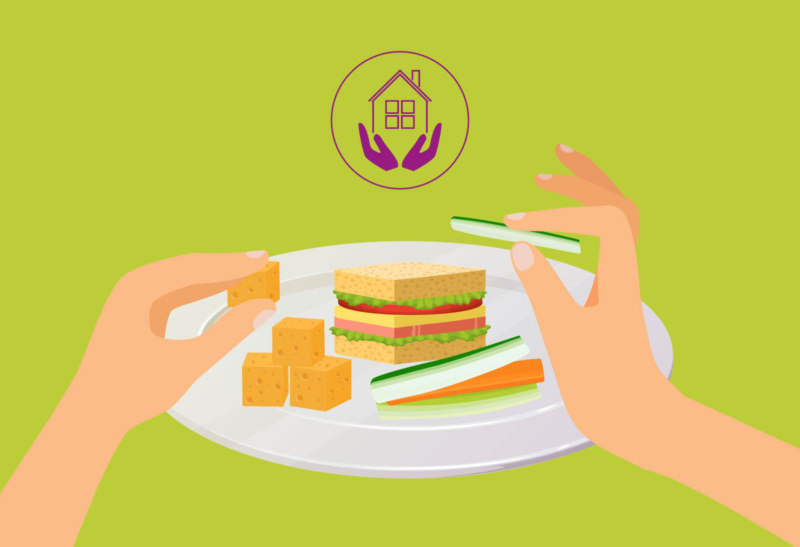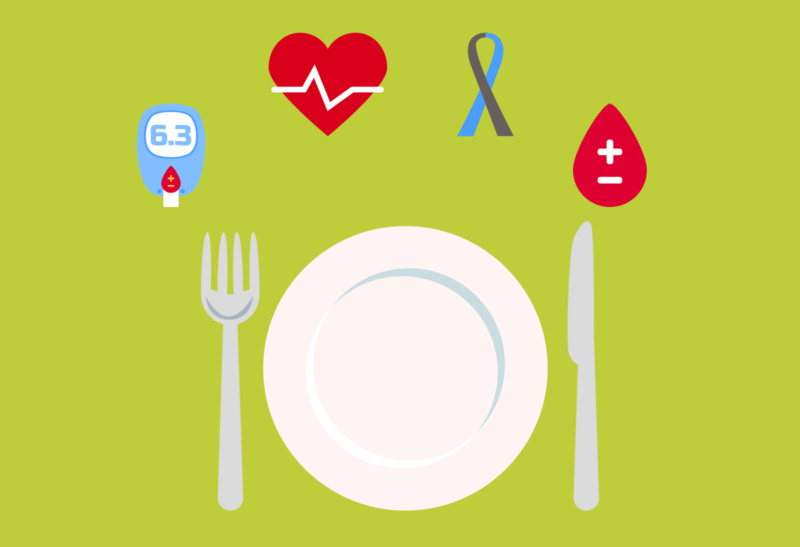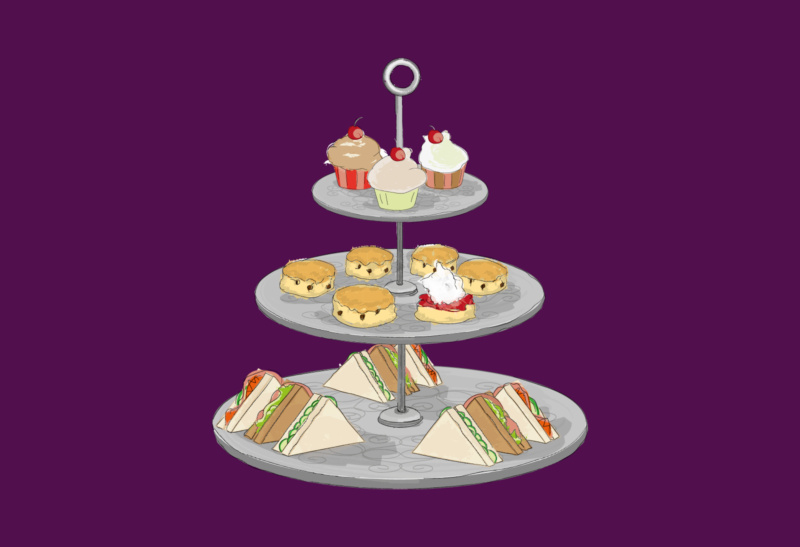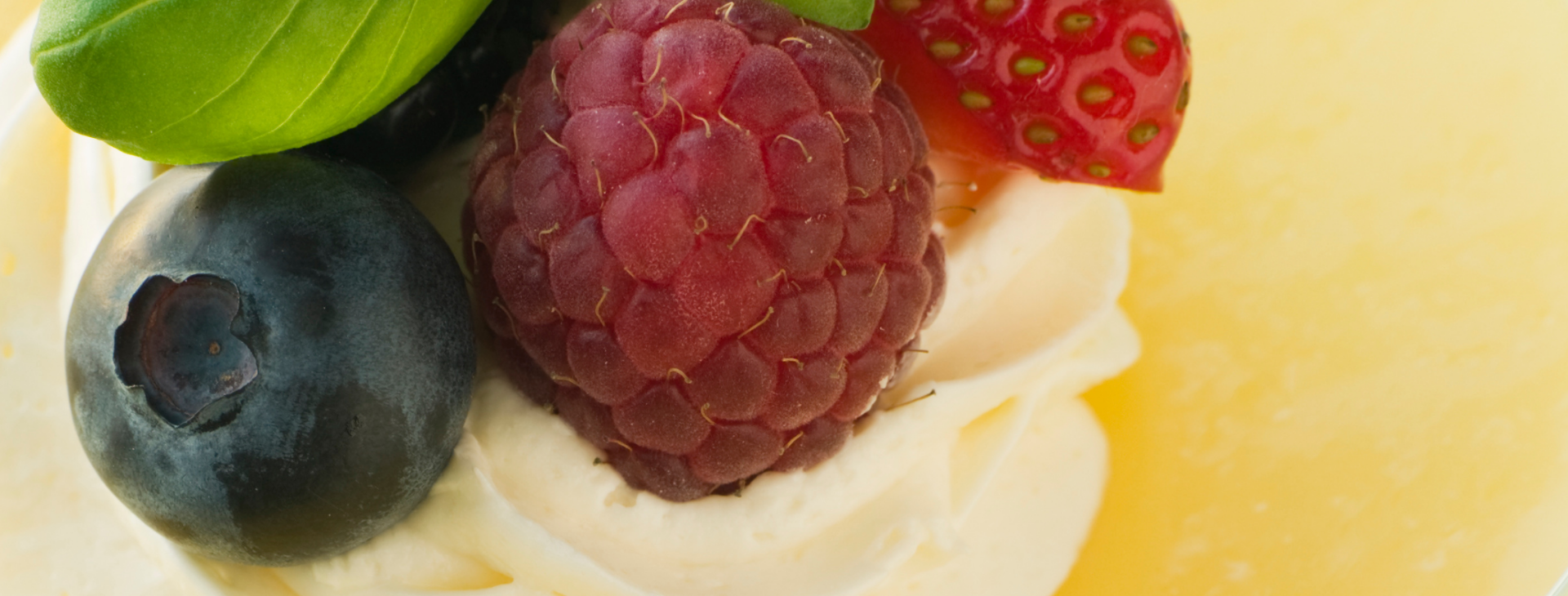Dementia is a general term for symptoms that can affect memory, thinking and behaviour. There are many different causes and types of dementia, the most common type being Alzheimer’s disease.
This progressive condition is most common in people over 65, with 70% of residents in care homes estimated to have dementia or severe memory problems.
In this blog we meet Heather Dolan, Nutrition Manager at Bidfood. Heather has several years’ experience working in foodservice across various sectors, including healthcare. Below, she explains why good nutrition is imperative when catering for dementia and how care homes can help create inspiring mealtimes for residents.
Why is good nutrition so important for residents with dementia?
Symptoms of dementia include changes in personality or mood and problems with memory, communication, understanding, movement and performing familiar tasks.
Eating and drinking may also be affected, for example, people with dementia may:
- Have a poor appetite
- Not recognise signals of hunger and thirst
- Forget to or refuse to eat
- Not recognise certain foods
- Experience a change in food and drink preferences
- Face issues using cutlery
- Have difficulties with chewing or swallowing
- Move less, which can decrease appetite and energy requirements
- Pace or fidget, which can increase appetite and energy requirements
Symptoms of dementia commonly mean that individuals are at risk of weight loss and malnutrition (when the body doesn’t get enough nutrients). Malnutrition is a serious condition which can have a significant impact on quality of life, clinical outcomes, morbidity (the rate of disease) and mortality (the rate of death).
For this reason, it’s crucial that care homes support residents with dementia to eat well and meet their nutrition and hydration needs.
Are there any specific meal timing recommendations that may benefit people with dementia?
A large meal could be overwhelming for a person with dementia, therefore, try serving smaller, regular meals and snacks when catering for dementia. This “little and often” technique also gives residents the best chance of enjoying hot food while it is still warm.
It is also important to experiment and be flexible with meal timings. For example, offering a snack before a meal may help stimulate appetite, or offering breakfast in stages may help residents who forget that they have already eaten.
Finally, ensure mealtimes are well planned and not during medication rounds, when there is significant noise or distraction or when you know a resident will be tired.
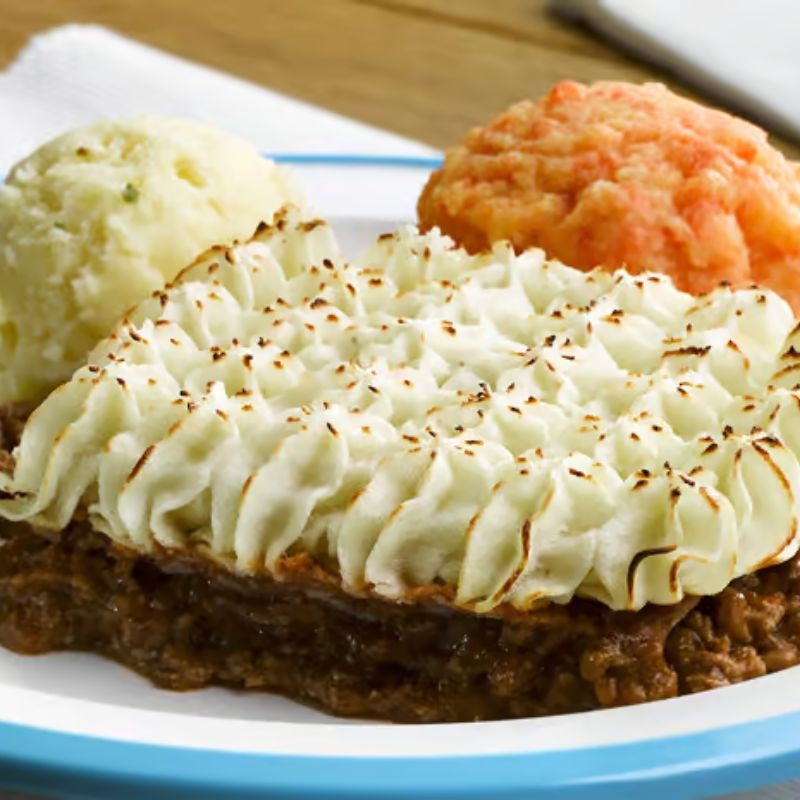

What are the key nutritional considerations when catering for dementia?
Due to the challenges with eating and drinking that people with dementia can face, it is vital to think about the energy (or calorie), as well as nutrient density of food and drinks that are being offered.
Overall, offer a healthy, balanced diet with a variety of fruits, vegetables, wholegrain carbohydrates, eggs, dairy products, nuts, seeds and lean proteins such as fish, meat and poultry. Be careful of foods that are less energy and nutrient dense, such as vegetable soups that are comprised largely of water.
These can be very filling, but offer little energy and nutrients.
1. Fortification:
- Fortification may also be a useful tool when catering for dementia, which is the concept of enhancing the nutritional content of a dish, without increasing the volume. This is important for residents who have a poor appetite and struggle to get the nutrients they need
- Butter and cream are high in calories and can make a dish taste nice, however, they are low in protein and other vitamins and minerals. Instead, try fortifying with nutrient-dense foods such as cheese, nuts (ground or nut butter), skimmed milk powder, Greek yoghurt and eggs. Coconut milk is well suited to certain recipes such as soups and curries, but bear in mind that it is low in protein and a source of saturated fat
- For fortified recipe inspiration, check out our care home menu cycle guide created by Heather and Wayne, our Culinary Development Chef. Why not try roast celeriac soup with herb oil and apple pearls, which has been fortified with milk powder to increase the protein content. Or, creamy porridge topped with homemade fruit compote and nut butter
2. Dysphagia:
- As dementia progresses, residents may experience difficulties with swallowing (also known as dysphagia) and should be assessed by a Speech and Language Therapist. Learn more about dysphagia here.
- For residents with dysphagia, you may wish to consider Simply Puree, a range of quality texture modified meals made to the highest safety standards, available from Bidfood. There is a wide selection of choices and each dish complies with IDDSI guidelines, allowing you to prepare each meal safely and with peace of mind. For more information, check out Home – Simply Food Solutions
3. Hydration
- Finally – don’t forget about fluids when catering for dementia!
- Ensure a variety of hot and cold drinks are available throughout the day
- Offer drinking aids and assistance where appropriate
- Encourage milky drinks such as coffees, hot chocolates and malted drinks
- Incorporate foods with a higher water content onto menus such as fruit, jelly, custard and soup (depending on the nutrient density)

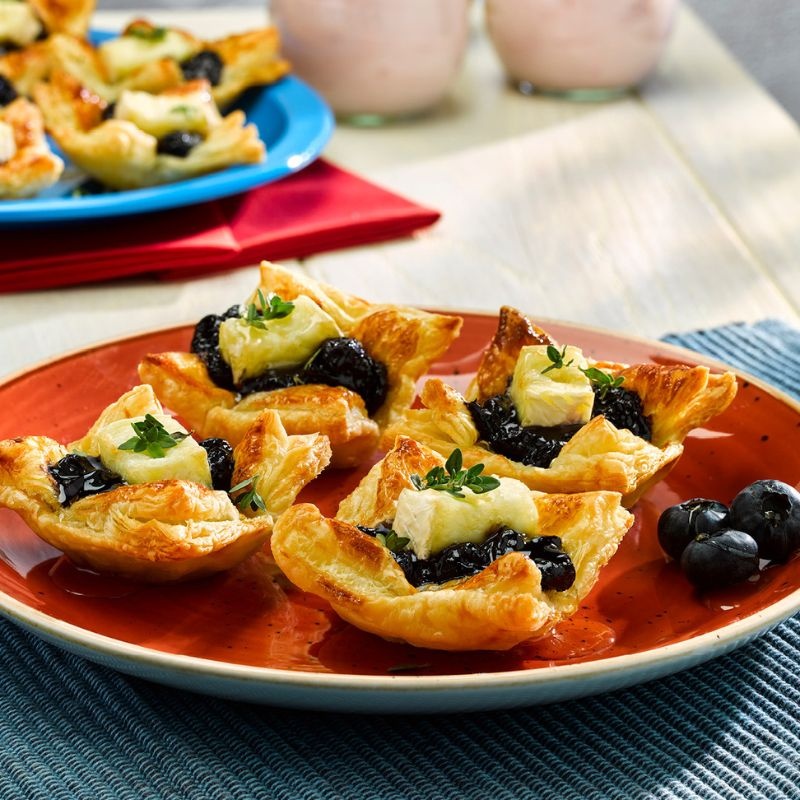
What is meant by cutlery free?
Some residents with dementia may struggle to eat using conventional cutlery. Cutlery free is the concept of serving foods that can be picked up and eaten with the fingers, which can help improve food uptakes during meal and snack times. Cutlery free options include sandwich fingers, cheese cubes, vegetable sticks, fruit segments and mini quiches.
You may associate bite-sized foods with buffet foods, which are typically high in fat, saturated fat, sugar and/or salt and lower in essential nutrients, however, this does not have to be the case. Your cutlery free offering should be carefully planned to ensure there is adequate energy and nutrients for residents.
Design cutlery free options to be as similar to the regular meal as possible, so residents don’t miss out on nutrients. For example, when serving kippers and poached eggs, you could create a cutlery free kipper scotch egg, or on Sundays, fill mini Yorkshire puddings with mashed potato and roast meat or vegetables, with a pot of gravy to dip.
Cutlery free dining encourages independence and dignity and means that those who walk around at mealtimes have the opportunity to eat standing, or on the go.
What else can care home teams do to ensure they are supporting their residents with dementia effectively?
1. Preparation:
- Involve residents with dementia in the decision of what to eat, taking their personal dietary requirements and preferences into consideration
- Ask if they would like to help prepare food or set the table, to promote interest in mealtimes
2. Presentation:
- Ensure meals are visually appealing and appetising, regardless of the format in which they are served
- Some residents may struggle to distinguish their food from the plate, or the plate from the placemat or tablecloth. Avoid busy patterns, but do contrast colours to help residents see their food properly. For example, white fish and mashed potato served on a white patterned plate on a white tablecloth is very similar and could be confusing! Instead, serve white fish and mashed potato on a plain blue plate, on a white tablecloth
- Try adapted cutlery, special cups and deep lipped plates to see if these items are easier to use and more comfortable for residents
3. Environment:
- Ensure that the environment in which residents are served food is well lit, calm and comfortable, including dining chairs and the temperature of the room
- Play relaxing music (if residents enjoy this) and try to minimise potentially off-putting smells and loud noises, such as a radio or television, which might distract residents from their meal
- Keep table settings simple, and try napkins and plates rather than trays
4. Experience:
- Enhance the dining experience by offering foods with different smells, colours and tastes, to stimulate residents’ appetite and senses. For savoury food, add herbs and spices, garlic, mustard and other sauces. For sweet food, add honey, maple syrup, jam or vanilla
- Incorporate familiar textures and flavours into meals to help evoke positive memories. Try to discover what these are for individual residents by talking to them, their family and/or friends
- Always check the temperature of residents’ food and drink to ensure it is not too hot – they may not be able to do this themselves!
- Allow plenty of time to eat
- Finally, make eating a sociable occasion by encouraging staff, family and friends to eat with residents. However, it is important to be mindful that preferences will differ from person to person and some residents may feel self-conscious of eating in front of other people
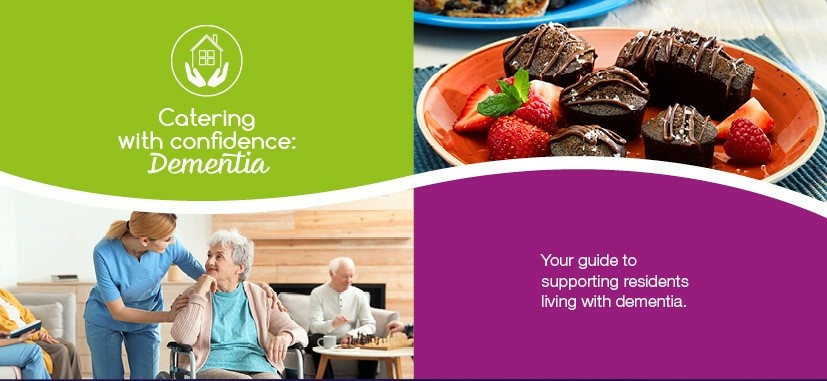
For more support creating inspiring mealtimes for residents with dementia, check out our page on Catering for Dementia with Confidence, featuring a helpful guide and recipe ideas.
Furthermore, on our care home page, you can find our care home menu cycle guide, as well as our brand new interactive care home, brimming with specialist support: Care home food suppliers & menu ideas – Bidfood
